
Hyundai i10 Hatchback (2014-2020) engines, drive and performance
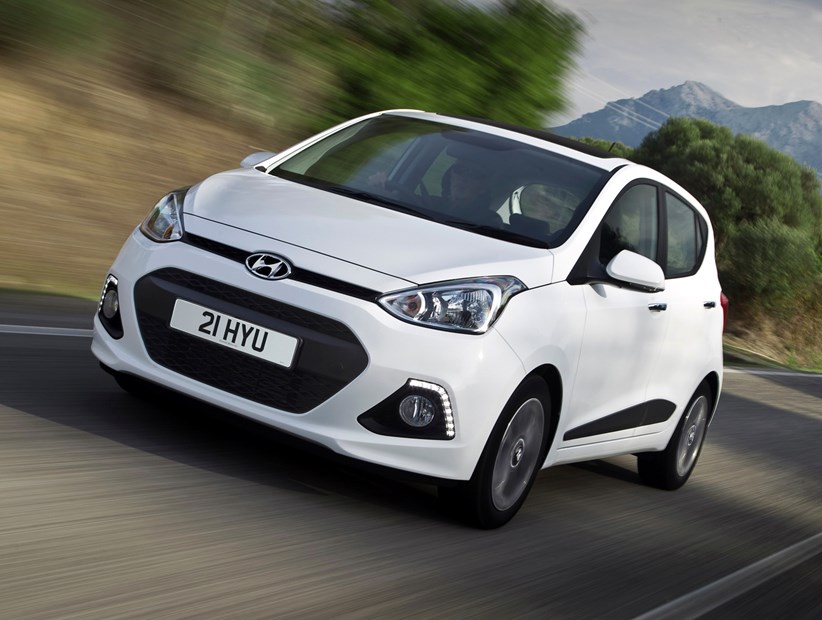
With small-capacity petrol engines under the bonnet, Hyundai i10 performance is not exhilarating, but the motors are well-suited to the car’s characteristics.
There are two versions of the three-cylinder 1.0-litre engine available, with a larger four-cylinder 1.2-litre providing more power. There are currently no plans for a diesel variant.
All i10s feature a five-speed manual gearbox, its smoothness improved by carbon coating its internal components. A four-speed automatic is optional on the 1.2-litre SE.
With 65bhp and 94Nm of torque at 3,500rpm, you’d be forgiven for imagining the three-cylinder 1.0-litre engine might be struggling for pace, but the i10’s light weight and best in class aerodynamics enable it to make decent progress.
It feels quicker than it 96mph top speed and 14.9 second 0-62mph acceleration time suggest, and is refreshingly refined, albeit lacking the characteristic sporty sound of many three-cylinder engines.
At 60.1mpg and with CO2 emissions of 108g/km it’s economical to run too, although those figures are trumped by the thrifty BlueDrive version.
Available only in mid-range SE trim, the 1.0-litre BlueDrive has a number of fuel saving measures to improve efficiency. The result is a reduction in petrol consumption to 65.7mpg and CO2 output of just 98g/km.
Expected to account for 40 percent of sales is the four-cylinder 1.2-litre with 86bhp and 120Nm of torque at 4,000rpm. It’s a little more eager than the 1.0-litre versions, finishing 0-62mph dash in12.3 seconds and progressing on to a top speed of 106mph.
Choose the 1.2-litre engine with optional four-speed automatic transmission and performance suffers, with top speed dipping to 101mph, while the dash from 0-62mph takes 13.8 seconds.
At 142g/km it’s the least green i10 available too, with overall fuel economy at 45.6mpg. By comparison the manual version has claimed figures of 57.6mpg and CO2 emissions of 114g/km.
Although Hyundai i10 handling is unlikely to excite enthusiastic drivers, it’s a balanced city car at both high and low speed and genuinely feels like you’re driving a bigger car.
By making the whole car larger, lower and stronger, the fundamental dynamics of the i10 ensure it feels stable and with improved suspension, it’s genuinely comfortable over long journeys.
The way the i10 soaks up everything from long undulations on back roads to pot-holed urban streets is particularly impressive. Little suspension noise intrudes into the cabin and the initial bounce is well-controlled, the i10 quickly regaining composure.
Hyundai hasn’t set-up the i10 to be a sporty car, most obvious through its steering. There’s little feel of what the front wheels are doing but the resistance is heavier than the old car giving a greater sense of connection.
It turns accurately, only going wide of where you want it when it’s driven particularly hard, and body roll is kept tidily in check too.
There’s an appreciable improvement in agility over the old i10 and although it’s not particularly quick, the car can more than cope with the power available.
Undoubtedly the standard electronic stability control plays a part in i10’s handling but it’s not an intrusive system with it barely being felt in the majority of driving situations.
The heaviest i10 is only 1,049kg but with disc brakes fitted front and rear it slows and stops quickly, even after repeated, harder use on winding roads.


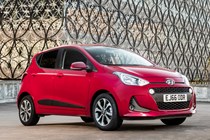
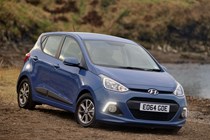
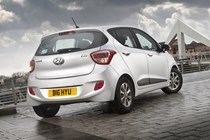
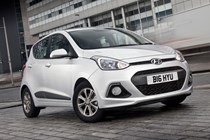
.jpg)
.jpg)
.jpg)
.jpg)
.jpg)
.jpg)
.jpg)
.jpg)
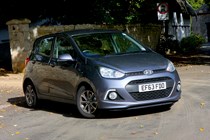
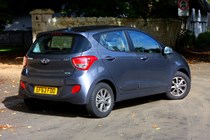
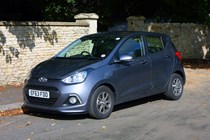
.jpg)
.jpg)
.jpg)
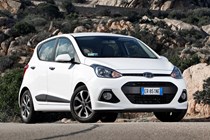
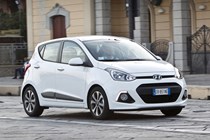
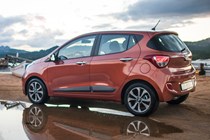
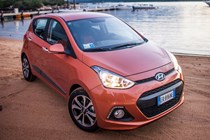

.jpg)
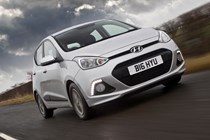
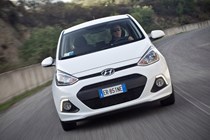
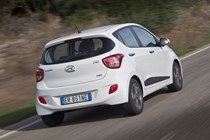
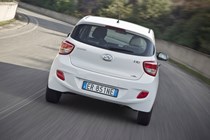
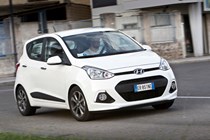
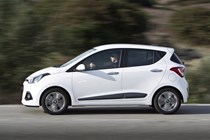
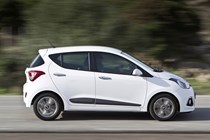
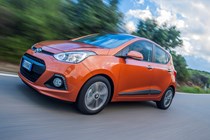
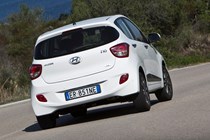
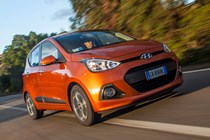
.jpg)
.jpg)
.jpg)
.jpg)
.jpg)
.jpg)
.jpg)
.jpg)
.jpg)
.jpg)
.jpg)
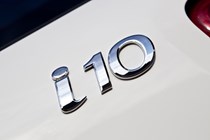
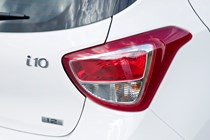
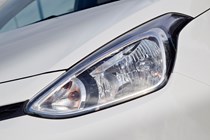
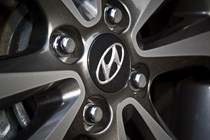
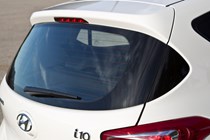
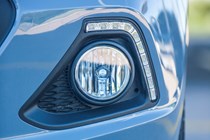
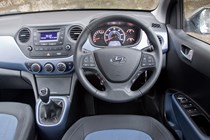
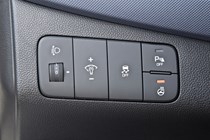
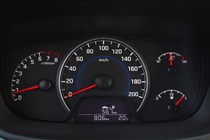
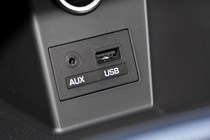

.jpg)
.jpg)
.jpg)
.jpg)
.jpg)
.jpg)
.jpg)
.jpg)
.jpg)
.jpg)
.jpg)
.jpg)
.jpg)
.jpg)
.jpg)
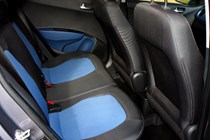
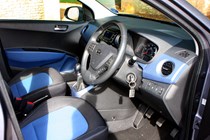
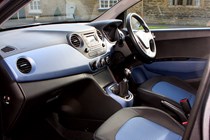

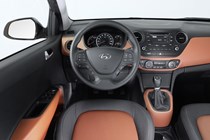
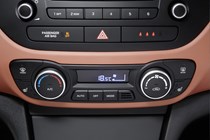
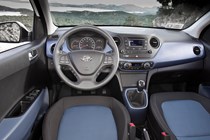
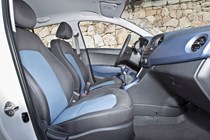
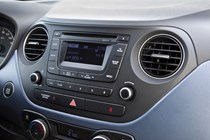
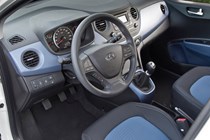
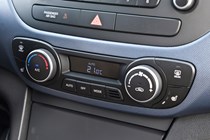
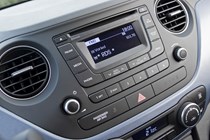
.jpg)
.jpg)
.jpg)
.jpg)
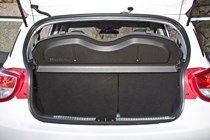
.jpg)

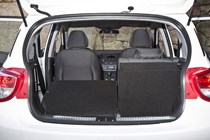
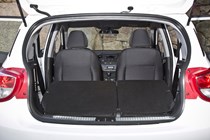
.jpg)
.jpg)
.jpg)
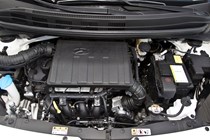
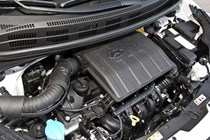




.jpg?quality=50)
.jpg?quality=50)
.jpg?quality=50)
.jpg?quality=50)
.jpg?quality=50)
.jpg?quality=50)
.jpg?quality=50)
.jpg?quality=50)



.jpg?quality=50)
.jpg?quality=50)
.jpg?quality=50)





.jpg?quality=50)










.jpg?quality=50)
.jpg?quality=50)
.jpg?quality=50)
.jpg?quality=50)
.jpg?quality=50)
.jpg?quality=50)
.jpg?quality=50)
.jpg?quality=50)
.jpg?quality=50)
.jpg?quality=50)
.jpg?quality=50)











.jpg?quality=50)
.jpg?quality=50)
.jpg?quality=50)
.jpg?quality=50)
.jpg?quality=50)
.jpg?quality=50)
.jpg?quality=50)
.jpg?quality=50)
.jpg?quality=50)
.jpg?quality=50)
.jpg?quality=50)
.jpg?quality=50)
.jpg?quality=50)
.jpg?quality=50)
.jpg?quality=50)












.jpg?quality=50)
.jpg?quality=50)
.jpg?quality=50)
.jpg?quality=50)

.jpg?quality=50)



.jpg?quality=50)
.jpg?quality=50)
.jpg?quality=50)

